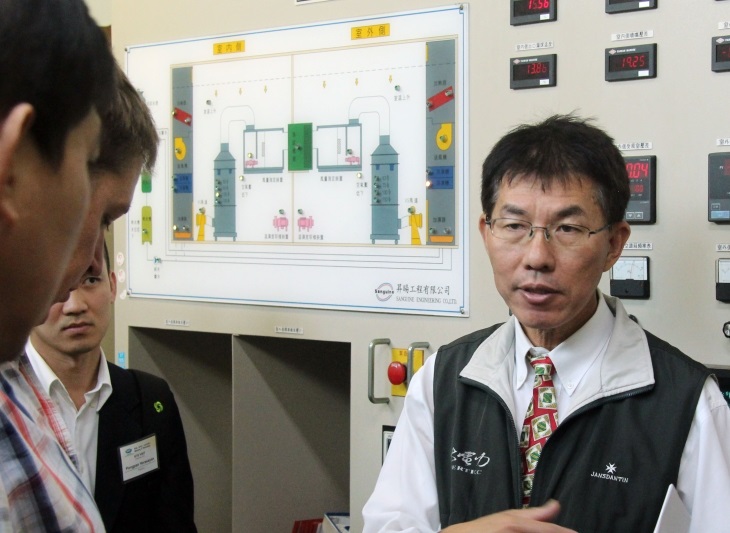APEC on target to reduce energy intensity, but more work needed, says early assessment

APEC is on target to reduce its energy intensity and meet its green growth goals to reduce APEC's aggregate energy intensity by 45 percent by 2035, according to an analysis released this week in Chinese Taipei.
Roberto Lozano, a researcher with the Asia-Pacific Energy Research Center (APERC), said that APEC could reduce energy intensity by 45% by 2035 if it achieves an average growth rate of 2% per year or 9.5% every 5 years.
“APEC’s energy intensity reduction is framed within a permanent commitment to reduce the effects of climate change, namely greenhouse gas emissions, while supporting economic growth and development,” Lozano told the APEC Expert Group on Energy Efficiency and Conservation on Thursday.
“With 2005 as a reference, it is expected that by 2035 energy intensity will have decreased 59.3% in the transport, 48.4% in the industry and 45.9% in the joint demand of the residential, commercial and agriculture sectors,” he explained.
The group acknowledged that in spite of APERC’s latest projections suggesting that it is possible for APEC to meet its goal of reducing energy intensity in 45% by 2035, the recent historic trend indicates that it might still require further efforts to accomplish it.
For that reason, member economies reported on their commitments to boost their efforts to achieve that goal. At the same time, the work will yield better trade flows in energy efficient goods and services across the region.
APEC delegates recognized that energy efficiency and conservation are global issues and vital for the modern civilization. Its improvement is often considered a major indicator of an economy’s sustainable development.
“Some of the energy savings have been achieved domestically, but not necessarily across the borders,” said Dr Alex Tong, Vice President and General Director of the Industrial Technology Research Institute in Chinese Taipei.
Briefing the group about progress made in Chinese Taipei, Tong explained how ITRI, a nonprofit research and development agency, developed a platform for loan guarantees to energy service companies that can work across the border and achieve energy savings across economies.
“Just recently we tried to commercialize recovery of energy from waste heat,” he continued. “This provides 10% efficiency over 100 degrees of waste heat.
“These energy savings practices without any fuel will create big savings and each economy has a program to support energy service companies.”
Indentifying a clear pathway to this goal, APEC Expert Group on Energy Efficiency and Conservation Chair Terry Collins reminded participants that APEC Leaders reaffirmed the need for greater reform and alignment in regulatory approaches and international standards to eliminate non-tariff trade barriers.
“Energy efficiency and conservation is common sense but only commitment and resolution can lead to its implementation,” he said. “This meeting is a good opportunity for us to share with what has been accomplished and to realize further improvement through information exchange.
“A responsive approach will be valuable for member economies to continue their work in the coming years,” he said.
Members agreed that innovation in the industrial and manufacturing sectors across Asia-Pacific will create energy savings.
Work is underway to complete the 5th edition of the APEC Energy Demand and Supply Outlook which will be published in late 2012. The volumes will include a summary of key trends in demand and supply; an overview of APEC energy investments and alternative scenarios for high gas; improved urban planning; and the race for a virtual clean car.
# # #
For more information, please contact David Hendrickson +65 9371 8901 at [email protected] or Michael Chapnick +65 9647 4847 at [email protected].
Additional details about APEC initiatives can be found at www.apec.org. You can also follow APEC on Twitter and join us on Facebook.

